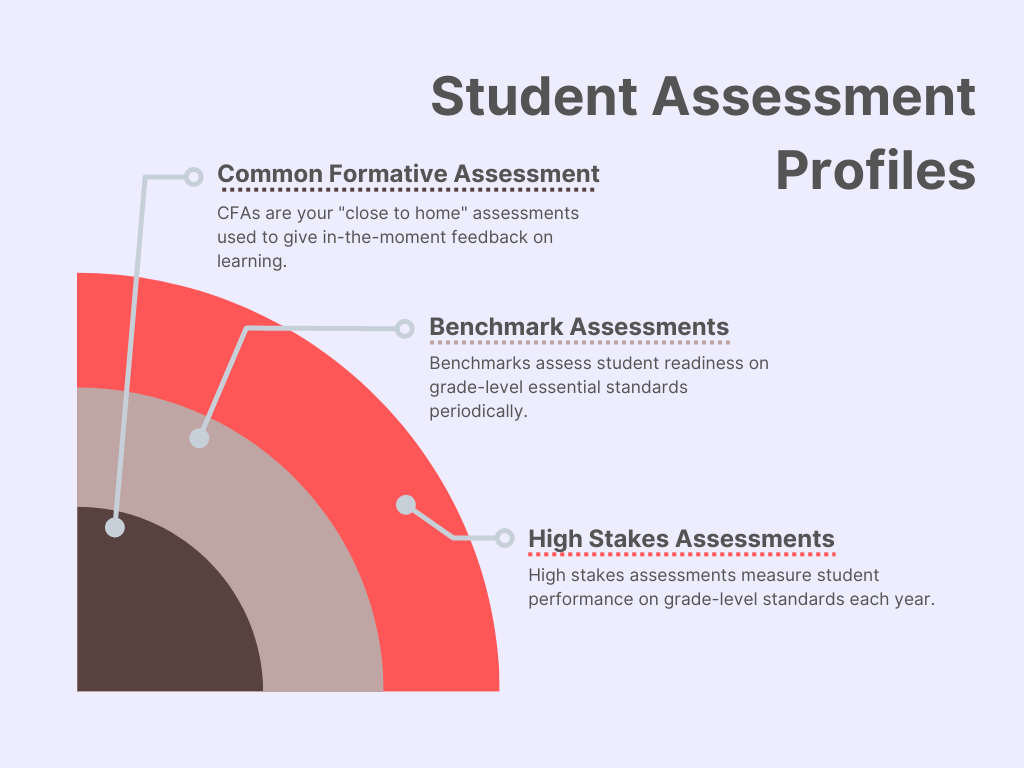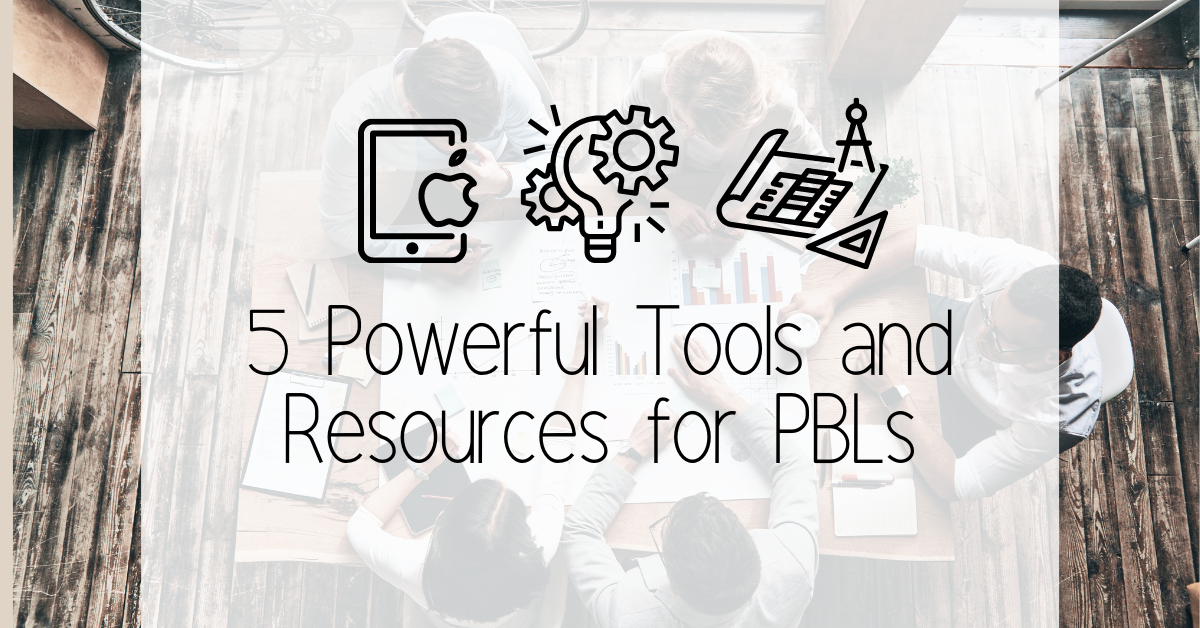In this post, we want to take a look at how a student’s “assessment profile” can inform your discussions and decision making as a group.
What is an assessment profile?
In short, the assessment profile is the layers of assessment data available for your students and the information carried in each layer. Our assessments give insight into student learning at different levels. It is necessary to use each tool appropriately when making decisions about extensions or remediations for your student groups.

The assessment data collected is a part of the data your team can use to make instructional decisions. Remember to not neglect your students’ relationships with peers and adults, their like and dislikes, their goals or ambitions. The non-test data available to your team is just as rich and informative as the data available from the tests.
Let’s dive into each level and look at what can be drawn from assessment layer, starting with the highest-level view.
High-stakes assessment
Each year, our students take some kind of high-stakes assessment. In elementary, it is the ILEARN test. At secondary, it may be the SAT, ACT, or a final exam for a course. This assessment is a single objective look at their proficiency on grade-level standards.
High stakes tests can give insight on the student’s current progress in a content area. Knowing where a student finished after a year of instruction on grade-level material can help you target essential standards which serve as a bridge from one year of study to another. Use these results for initial skill-based groupings and to choose material for enrichment or remediation. Each year, your PLC should look at the new group of students and design appropriate learning tasks across courses based on this grade-level data.
Benchmarks
Moving closer to the student today, elementary and middle grade (K-8) students take the NWEA as a benchmark. The role of the benchmark is to assess readiness on grade-level standards. How did the student do at the start, middle, and end of the year? What interventions or enrichments were effective in getting students to achieve proficiency on the essential standards?
In the upper grades, using the IXL Diagnostic is a great way to have benchmark assessments. Students receive skill plans based on their performance which can be used to develop or maintain skills defined by the teacher. If your PLC administers the diagnostic at strategic points in the year, you can discuss the growth scores for your groups of students after several weeks of instruction. It will also allow you to strategically adapt upcoming lessons based on the group as a whole.
Following a benchmark, your PLC can identify students who need Tier 2 or Tier 3 interventions to close learning gaps.
Pro Tip: Student NWEA scores are already loaded into IXL and skill plans are ready for your students.
Common formative assessments
The CFA provides the “close to home” formative information for your PLC. After a time exploring an essential standard or concept, a CFA given across the team will allow you to discuss strategies which have worked and those which did not.
CFAs help us address immediate needs for that student to be prepared for the benchmark. Using this in-the-moment information allows you to adapt your Tier 1 instruction to close learning gaps in between your benchmark assessments. As you move into new standards, the CFA cycle begins again, giving you a running record of student achievement day to day.
The assessment profile in action
The amount of data available on our students is overwhelming and understanding the purpose of each set of data will help you and your team work more effectively. At the assessment profile, you should be able to answer this question: is the student ready for grade level standards?
Here are some questions your PLC can use to get started:
- Which piece (or pieces) of the assessment profile do you use the most?
- Which piece do you use the least?
- How has your team used assessment data to create your student groups?
- What data are you still missing or struggling to fit into your discussions?
What other tips or suggestions do you have for us? Leave a comment below with your ideas.



